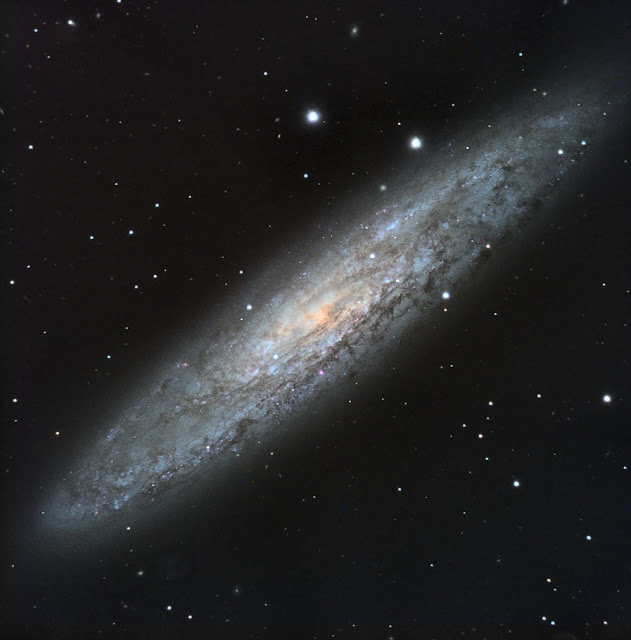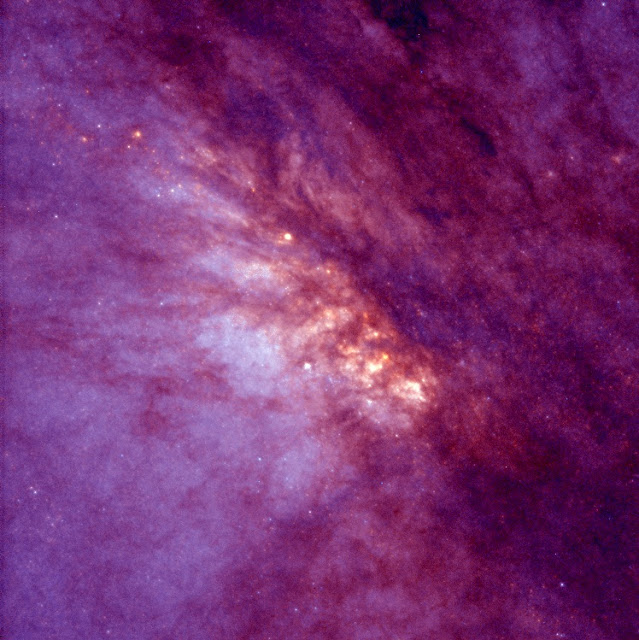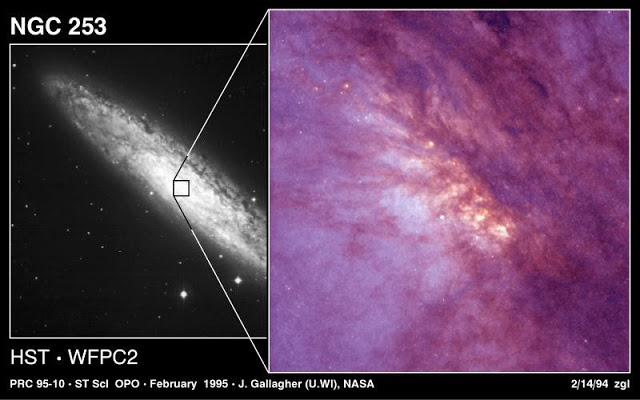

| Online: | |
| Visits: | |
| Stories: |

| Story Views | |
| Now: | |
| Last Hour: | |
| Last 24 Hours: | |
| Total: | |
Astronomers Probe Swirling Particles in Halo of Starburst Galaxy
A starburst galaxy is a galaxy experiencing a period of intense star formation and this one, known as NGC 253 or the Sculptor Galaxy, is approximately 11.5 million light-years from Earth.
“The Sculptor Galaxy is currently forming stars at a rate of five solar masses each year, which is a many times faster than our own Milky Way,” said lead researcher Dr Anna Kapinska, from The University of Western Australia and the International Centre for Radio Astronomy Research (ICRAR) in Perth.
“This galaxy is famous because it’s beautiful and very close to us, and because of what’s happening inside it–it’s quite extraordinary.”NGC253 starburst galaxy in optical (green; SINGG Survey) and radio (red; GLEAM) wavelengths. The H-alpha line emission, which indicates regions of active star formation, is highlighted in blue (SINGG Survey; Meurer+2006).
“We’re very fortunate to have such a great example of a starburst galaxy in our own cosmic backyard–it’s like having a galaxy-sized laboratory on hand to conduct experiments and test our theories,” said Dr Kapinska.
The barred spiral galaxy NGC 253 is 11.5 million light-years from Earth and the brightest member of the Sculptor group of galaxies. The galaxy appears elongated as we see it from an edge-on perspective and dark dust patches conceal much of its spiral structure, also masking the HII regions.
“With the GLEAM survey we were able, for the first time, to see this galaxy in its full glory with unprecedented sensitivity at low radio frequencies,” said Dr Kapinska.
“It’s remarkable how easily the MWA detected the diffuse halo, we managed it with just an hour of observing as the galaxy passed overhead,” she said.
The MWA is a precursor to the Square Kilometre Array (SKA) radio telescope, part of which will be built in Western Australia in the next decade.
Co-author Professor Lister Staveley-Smith, from ICRAR and the ARC Centre of Excellence for All-sky Astrophysics (CAASTRO), said the SKA will be the largest radio telescope in the world and will be capable of discovering many new star-forming galaxies when it comes online.
These images show the spiral galaxy NGC 253.
“By getting to the bottom of what’s causing this galaxy to produce so many stars, we can better understand how other galaxies form, grow and change over time throughout the Universe.”
ICRAR: The International Centre for Radio Astronomy Research
Publication: ‘Spectral Energy Distribution and Radio Halo of NGC 253 at Low Radio Frequencies’, published in the Astrophysical Journal on March 28th, 2017.
Source:






